
Ceramics are traditionally described as inorganic, nonmetallic solids that are prepared from powdered raw materials and fabricated into products through the application of heat. Advanced ceramics represent an “advancement” over this traditional definition, with compositions ranging over oxides, nitrides, silicides, carbides, and combinations thereof. Key characteristic properties of advanced ceramics are hardness, strength, low electrical conductivity, and brittleness, although all properties can be tailored to meet specific niche properties through composition and processing. New materials or new combinations of existing materials have been designed that exhibit surprising variations on the properties traditionally ascribed to ceramics. As a result, there are now ceramic products that are as tough and electrically conductive as some metals. Ceramics cover a wide array of chemistries and applications where temperature, strength, precision, and thermal resistance are key to operational success and safety.
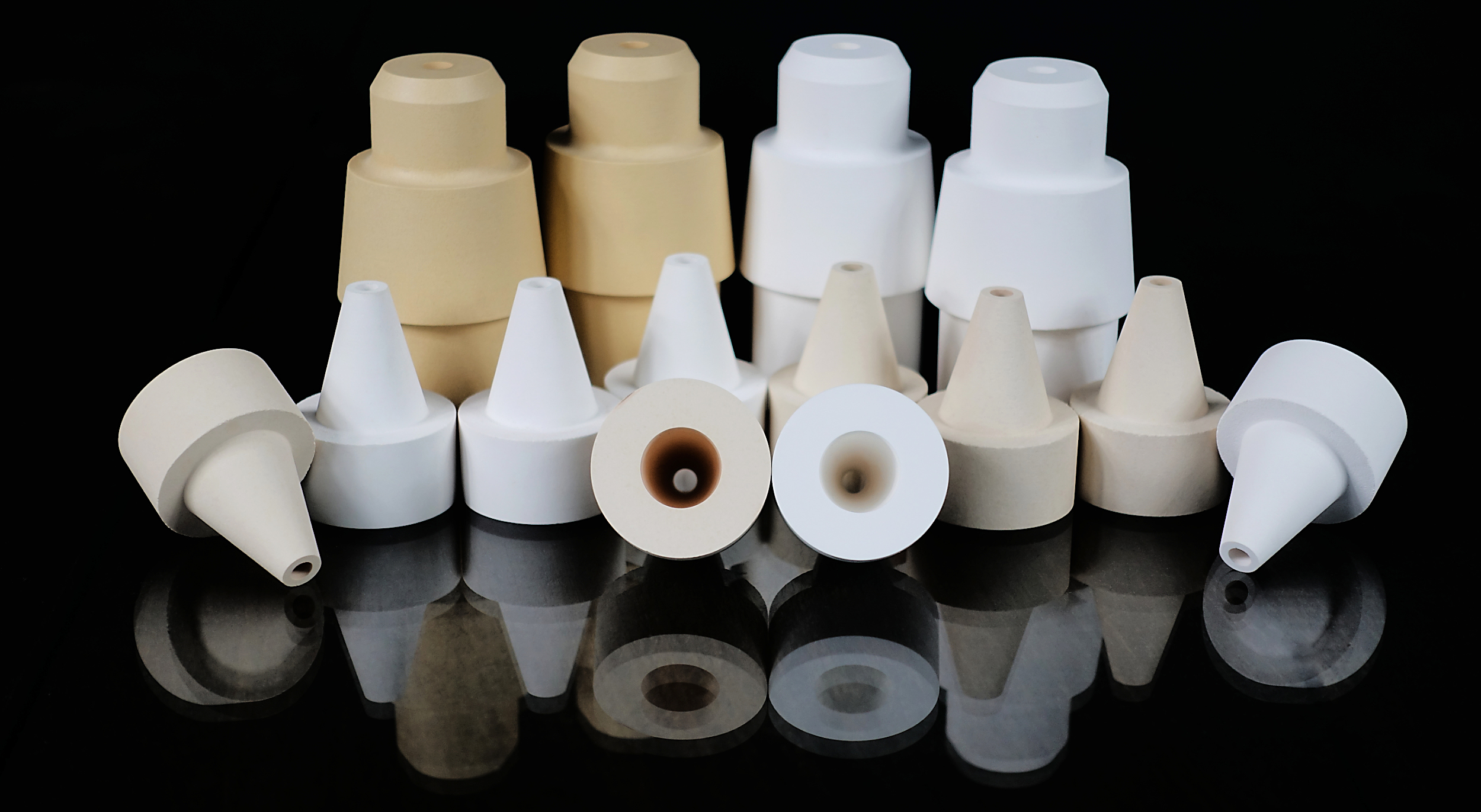
Advanced ceramic materials are used throughout thermal processing for many applications. The major types of advanced ceramics used in thermal processing will be reviewed by general chemistry and touch upon some of the applications within thermal processing.
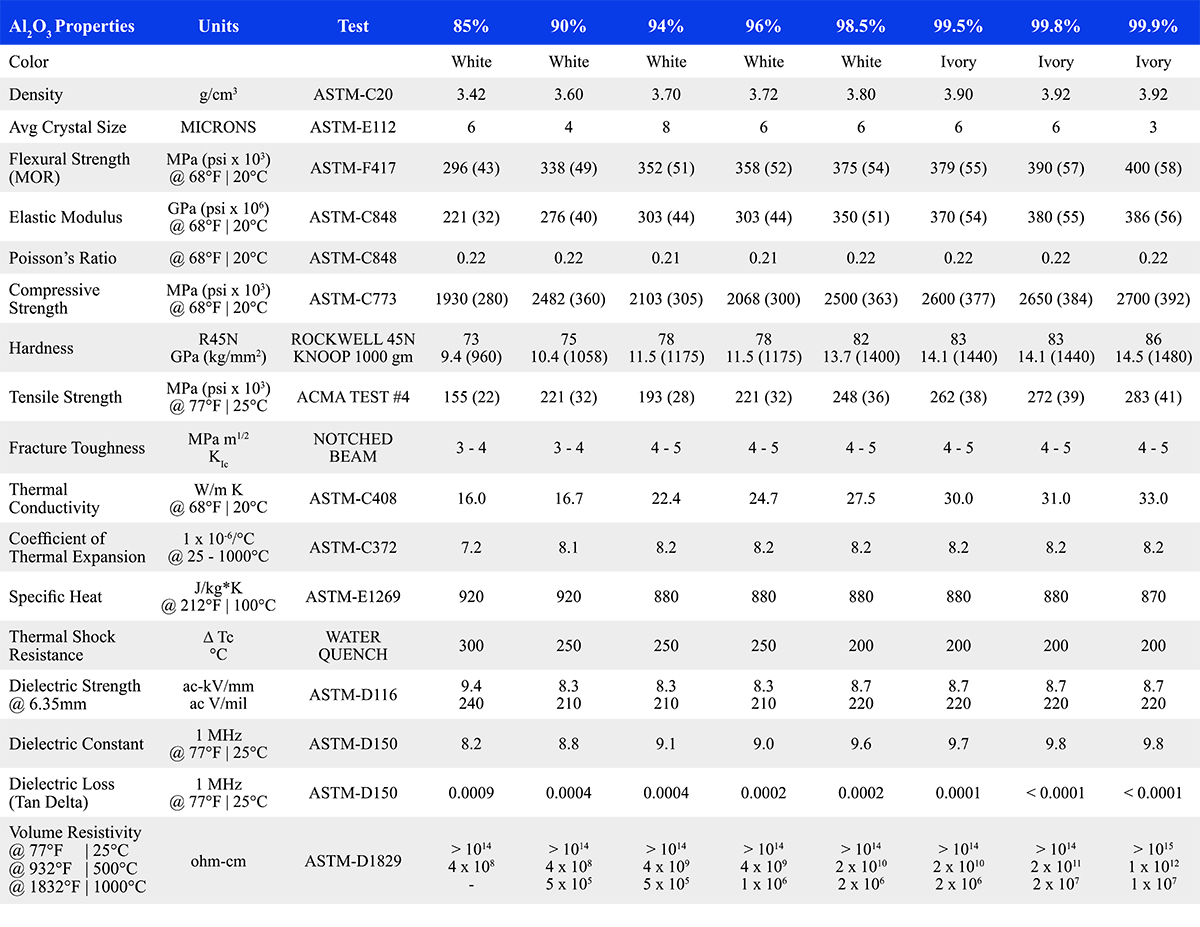
Aluminas (aluminum oxide, Al2O3) are the most commonly used technical ceramics due to their generally useful properties and good price/performance ratio and are suitable for most industry applications (See Table 1). Alumina, or aluminum oxide, is a hard, dense material with good strength and corrosion and erosion resistance, along with high electrical volume resistivity as well as low loss characteristics at high frequencies. The higher purity results in higher mechanical properties but higher costs. Alumina sees application from aerospace to medical, from bearings to analytical instrumentation, from electrical standoffs to semiconductor processing. In addition, these materials lend themselves well to be hermetically sealed to metals through metallizing and brazing methods, often used in the electrical feedthrough for vacuum and controlled atmosphere furnaces.
Standard shapes include plates, rods, tubes, and vessels. Alumina is used for many applications including kiln furniture and fixturing, wear-resistant plates, feedthrough tubes, support rods, and grinding media. Alumina crucibles are also used in the melting of high-temperature alloys as crucibles and pouring cups, although more limited due to poor thermal shock capability of alumina.
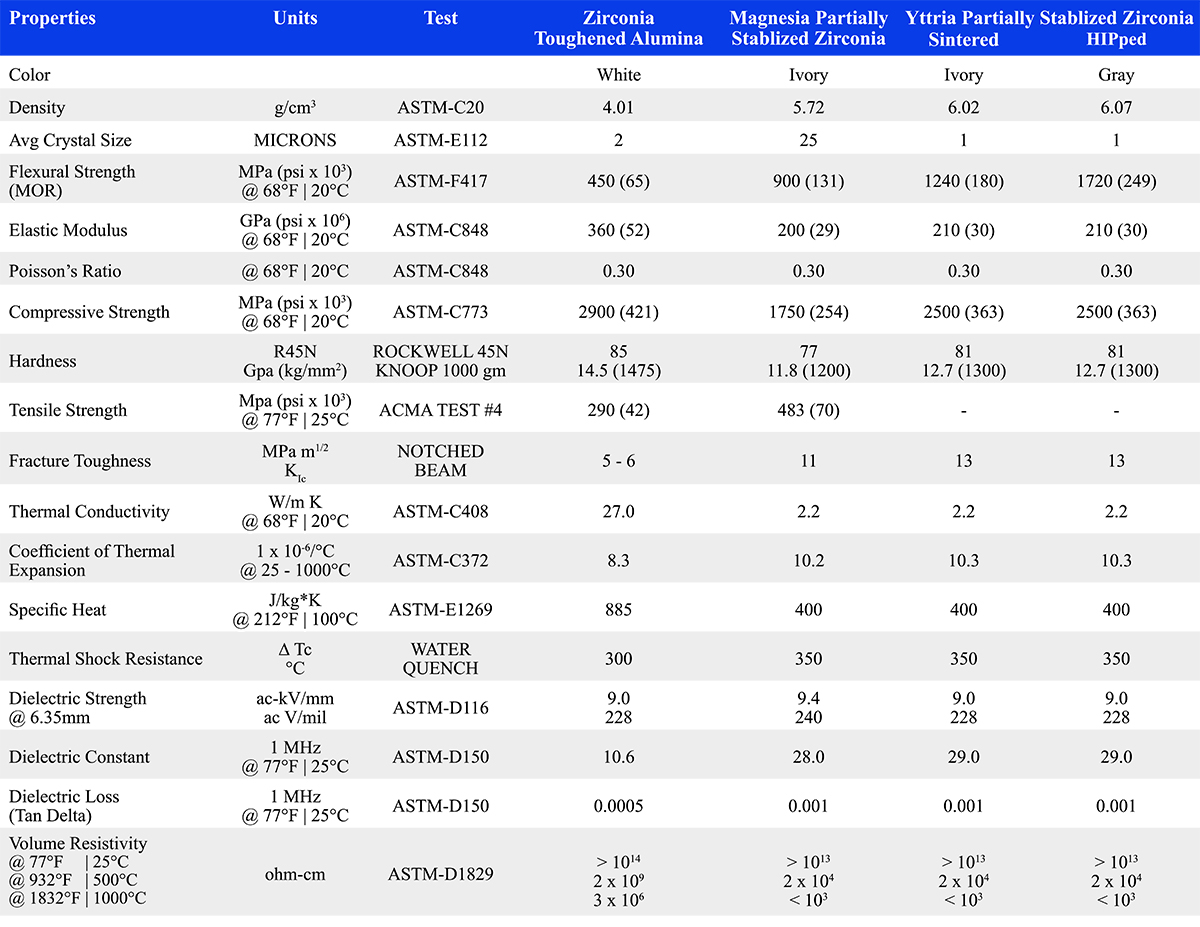
Zirconia (ZrO2) is a very hard and durable material with low thermal conductivity, electrical conductivity, and high strength (See Table 2). With certain densification additives, the material has a higher resistance to corrosion and melting point than alumina. Zirconia is used in oxygen sensors, feedthrough tubes, kiln furniture, grinding media, dental teeth, as well as other technical applications.
These are several of the most popular grades of zirconia:
Magnesia Partially Stabilized Zirconia (MgO-ZrO2) is mostly used for higher temperature applications, as it is stabilized against phase transformations at elevated temperatures. Often used for furnace and hot high-pressure fixturing.
Yttria Partially Stabilized Zirconia (Y-ZrO2) is a much fine-grained microstructure predominantly “transformation toughened” tetragonal phase resulting in relatively high strength and toughness (crack resistance), along with good corrosion and wear resistance when used at temperatures below 500°C. The hipped (high isostatic press) material has better mechanical properties and higher cost.
Alumina Toughened Zirconia (ZTA) provides about 25 percent greater strength than alumina at a lower cost than stabilized zirconias, with higher toughness, hardness, and wear resistance than alumina. It is good for high temperature applications.
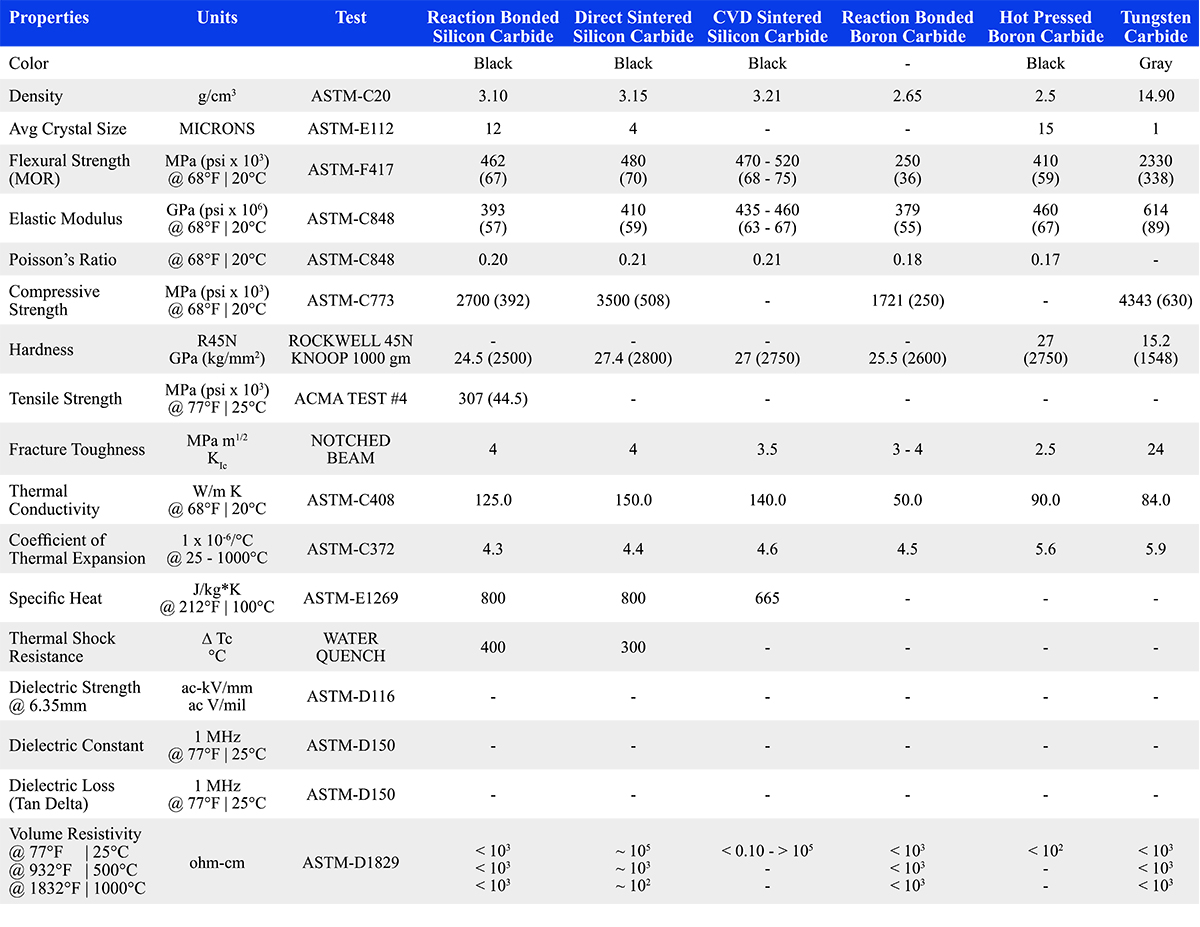
Silicon carbide materials (SiC) have very high hardness and rigidity with low density and some electrical conductivity, valuable in applications that require a combination of light weight and mechanical strength, even at high temperatures (See Table 3). Silicon carbide is used as a support and shelving material in high-temperature air kilns as well as used for heating elements for firing ceramics, glass fusing, or glass casting. SiC also makes the best body armor, as well as having wide use in semiconductor processing. SiC also has excellent erosion resistance and is used to line slurry handling equipment and mechanical seals.
There are several types of silicon carbide used in thermal processing. The more popular ones include:
Nitride bonded silicon carbide is formed near net shape with a hard, thick surface skin that is strong, has excellent thermal shock characteristics and wear resistance. Thermal processing applications include:
- Kiln furniture, pusher plates, and muffle liners.
- Liners for cyclone and hydrocyclone applications.
- Liners for pipe, immersion heater tubes, “pig” tube liners, and spool linings.
- Vortex finders, spray nozzles, thimbles, and dip tubes.
- Dust collector components.
Reaction Bonded Silicon Carbide has some residual silicon metal which limits its temperature of use, but it has excellent wear, impact, and chemical resistance. The strength of RBSC is almost 50 percent greater than that of most nitride bonded silicon carbides and can be densified near net shape into a variety of shapes, including cone and sleeve shapes, as well as more complex engineered pieces designed for equipment involved in the handling and processing of raw materials. Applications of this SiC include:
- Micronizers (for powder processing).
- Liners for cyclone and hydrocyclones.
- Boiler tube ferrules.
- Kiln furniture, pusher plates, muffle liners, plates, saggers, and setters.
- Spray and sand blast nozzles.
Recrystallized Silicon Carbide has been designed for a multitude of low mass kiln furniture applications including:
- Plates, saggers, boats, setters, muffle liners, kiln furniture.
- Burner nozzles, pilot, and flare tops.
- Structural furnace components.
Sintered Silicon Carbide is distinguished by exceptionally high strength that stays nearly constant up to very high temperatures (approximately 1,600°C) with no degradation over time. The material displays an extremely high corrosion resistance in acidic and basic media and is maintained up to very high temperatures. Properties are outstanding among high-temperature ceramics, complemented by high thermal shock resistance, high thermal conductivity, high resistance to wear, and hardness close to that of a diamond. Ideal for extremely demanding applications including:
- Mechanical seals, bearing bushes, and valve seats and components.
- High-temperature burner nozzles.
- Kiln furniture for very high application temperatures.
- High end liners for cyclones, hydrocylones, and slurry pumps.
- Note that other carbides commercially available include:
- Boron Carbide (B4C), which is used as sand blast nozzles and body armor.
- Tungsten carbide (WC), which sees applications in cutting and grinding tooling and fixturing.
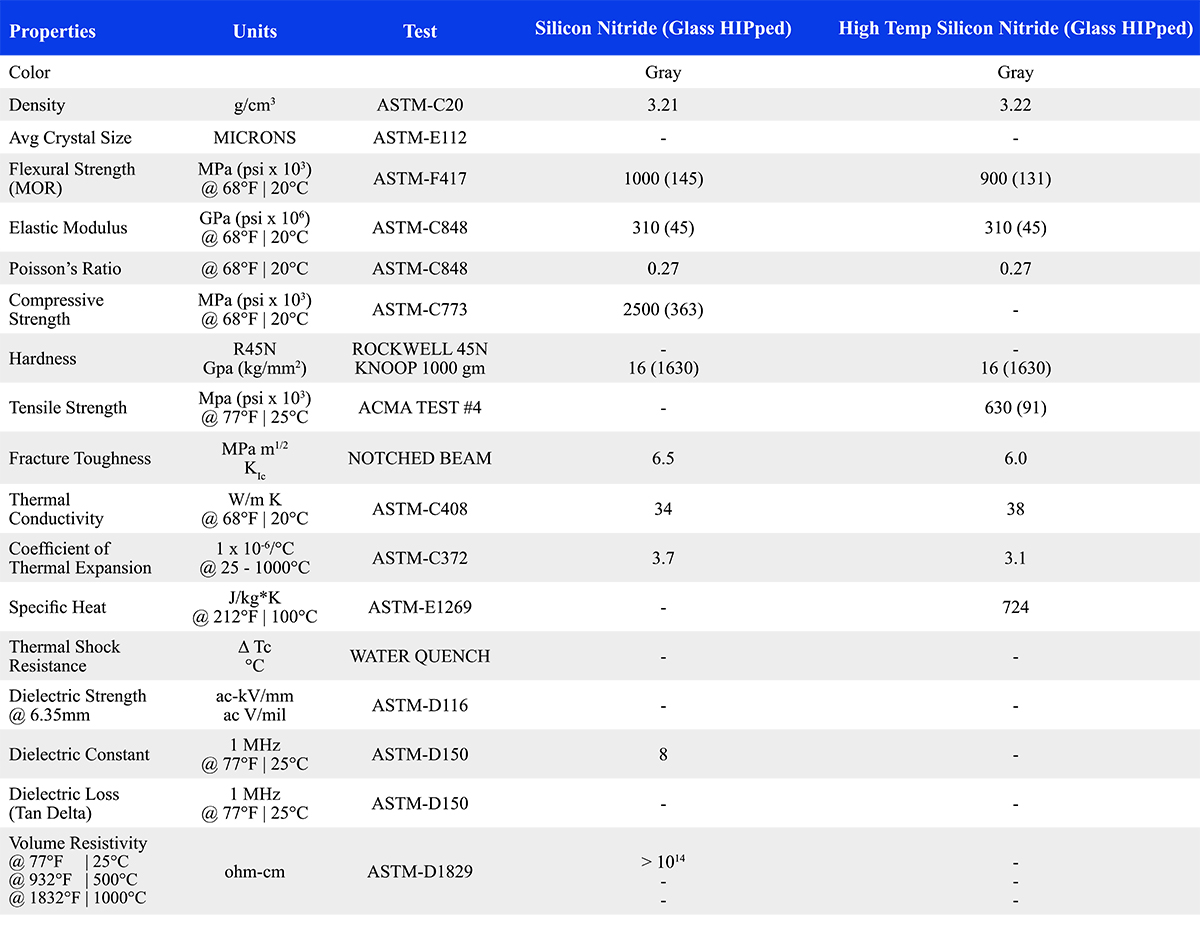
Silicon nitrides (Si3N4) are distinguished by their high-temperature strength, demonstrating an exceptional combination of mechanical and thermal properties (See Table 4). One particular advantage of silicon nitride is its high strength-to-weight ratio, which compares favorably even with metallic nickel-based “superalloys.” Silicon nitrides are used in severe-service environments requiring a combination of extreme flexural strength and toughness. Applications include:
- Gas injection, riser tubes, and immersion heaters in metal casting.
- Thermocouple protection tubes.
- Liners for valves, mechanical seals, and components.
- Grinding media and roller bearings.
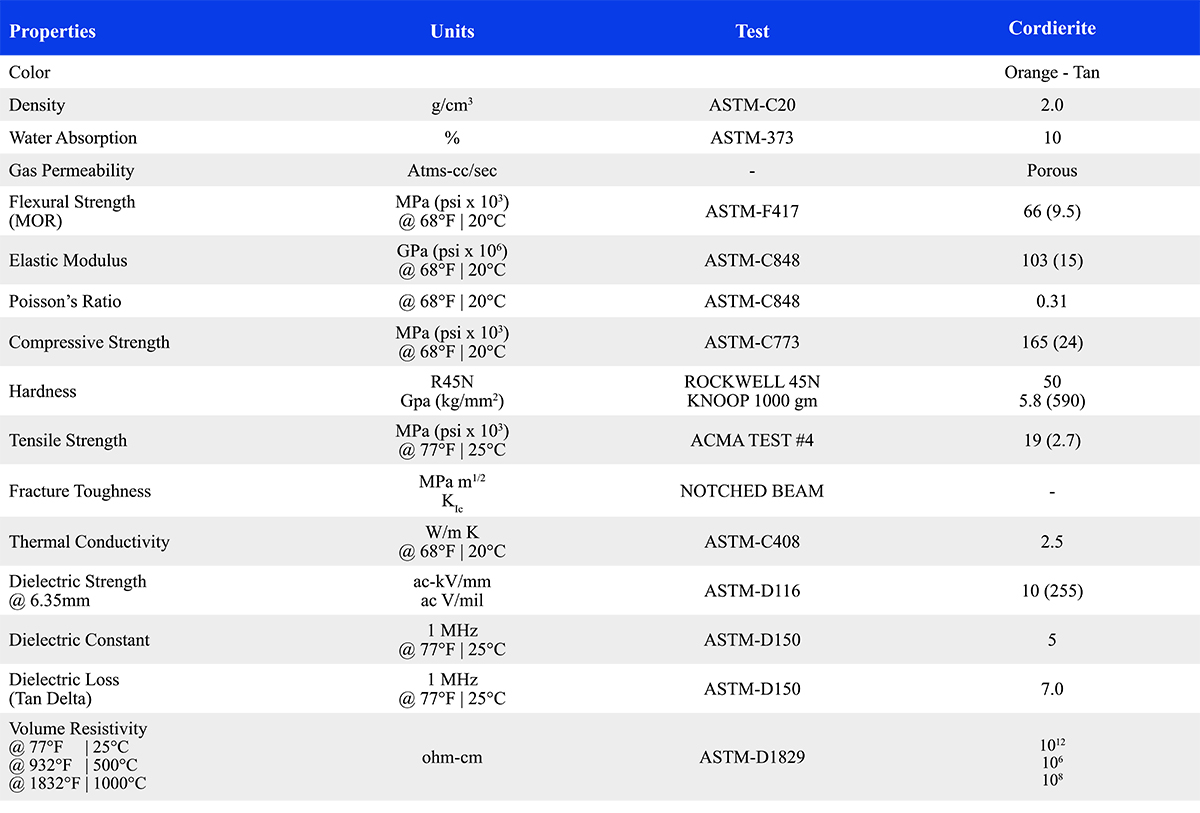
Cordierite (2MgO·2Al2O3·5SiO2) ceramics have low thermal expansion, providing excellent thermal shock resistance, but a more limited temperature of use range (∼1,200°C max) (See Table 5).
- Plates, saggers, boats, setters, and kiln furniture in air furnaces.
- Heating element holders and insulators.
- Hot gas filters, candle filters, and recuperators.
- Burner nozzles, pilot and flare tips.
- Reactor vessel linings, bubble caps, and tuyeres.
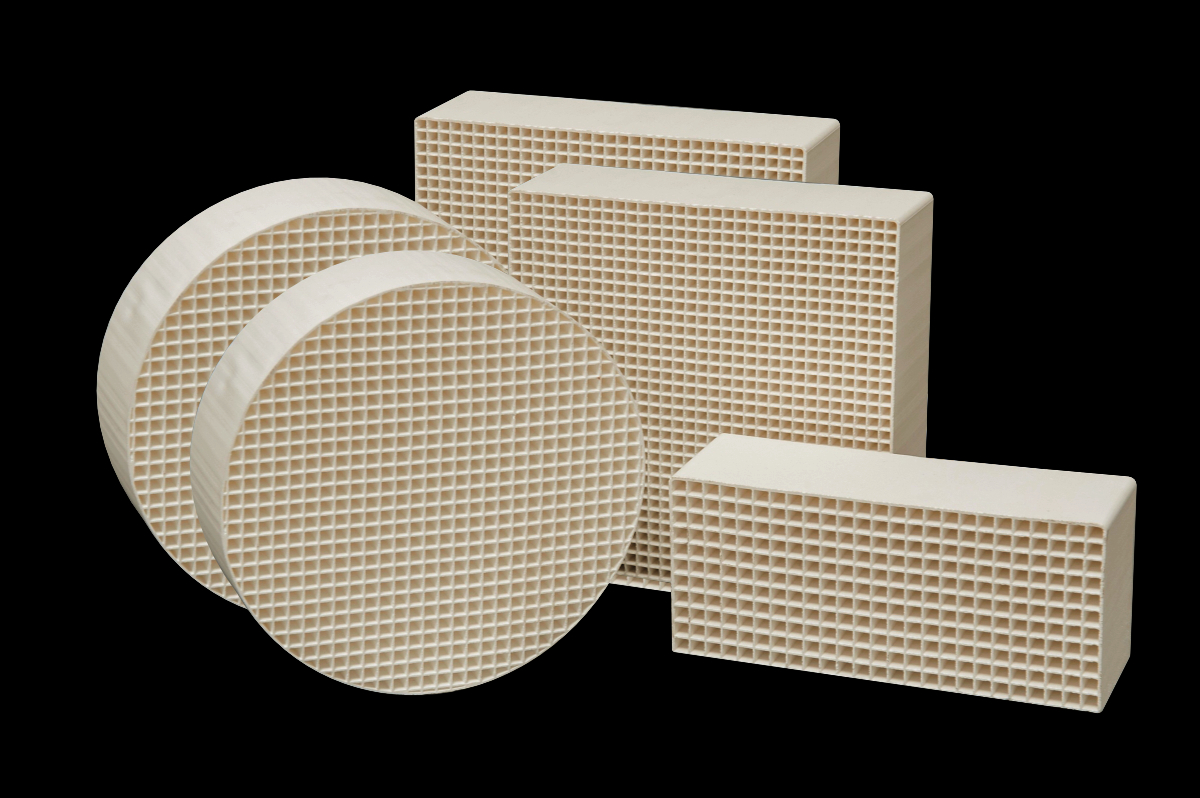
Refractories, while not considered advanced ceramics, should receive mention here as they represent the highest volume use of ceramics in the heat-treat industry. Refractories are non-metallic materials having those chemical and physical properties that make them applicable for structures, or as components of systems, that are exposed to environments above 1,000°F (538°C) made up of all the materials previously mentioned as fillers or components of the mix. Refractory materials are used in furnaces, kilns, incinerators, power generators, and reactors. Refractories are also used to make crucibles, cores, and molds for casting glass and metals. The iron and steel industry and metal casting sectors use approximately 70 percent of all refractories produced.























